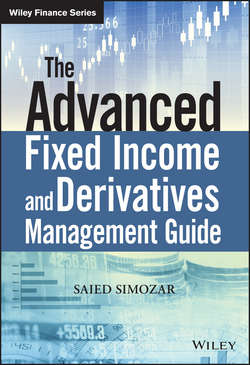Читать книгу The Advanced Fixed Income and Derivatives Management Guide - Saied Simozar - Страница 11
На сайте Литреса книга снята с продажи.
Chapter 1
Review of Market Analytics
ОглавлениеThis chapter reviews some of the basic analytics for fixed income securities and provides evidence for the inadequacies of the existing models. The simplest and most straightforward fixed income instrument is a bond. A bond is a security that pays interest at prescribed intervals, called coupon dates, and pays back the principal and final coupon on the maturity date.
Consider a company or a government that borrows $100 million for a period of 5 years at a rate of 7 % per year payable at semi-annual intervals. The borrower, also known as the bond issuer, will have to make coupon payments equal to 3.5 % of the borrowed amount or $3.5 million every 6 months to lenders, also known as bond holders or investors. At the end of 5 years, the borrower pays $3.5 million of interest plus the $100 million principal back to the lenders.
The above example is a typical bond, where the borrower, unlike mortgage borrowers, cannot pay back the principal earlier than scheduled. The bond holder can usually sell the bond in the secondary market and receive a fair price for it.
The primary risk of a bond holder, other than default, is a rise in interest rates. If inflation expectations increase, bond investors demand higher interest rates to compensate them for anticipated inflation that will lower their future buying power. Likewise, if inflationary expectations fall, interest rates are likely to fall as well. During rapid economic growth, demand for money rises, which can lead to higher interest rates. During recessions or low economic activity, demand for money falls, usually resulting in lower interest rates.
